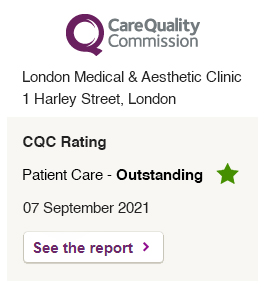Medical practitioners discuss the practical difficulties associated with treating cellulite and examine its causes, diagnosis and grading, as well as the range of treatment options they have chosen to use in their clinics. David Jacobs reports.
The term ‘cellulite’ was first used in the 1920s to describe the alteration of the skin surface of the legs characterised by an ‘orange peel’ or dimpled effect. Cellulite it is a common cosmetic problem as Mr Hassan Shaaban, consultant plastic and laser surgeon at Laser Plastic Surgery, explains, “It is estimated that 80% of women above the age of 20 have it.
In the majority of ladies, [it appears] in the outer thighs, the back of the legs, the buttocks and the front of the legs, and less on the inner thighs.” Cellulite mainly affects women – in fact, some practitioners have never seen a man attend for treatment.
Mr Shaaban points out, however, that cellulite does not always mean excess fat and affects slim women in the same way that it does those who are overweight. Kelly Swann, aesthetic nurse prescriber and co-owner of Swann Beauty, confirms that, “My key patient group is Caucasian women between the ages of 30 and 55, although some do fall outside of this range. Both men and women suffer, although women are more predisposed due to their anatomy and hormonal differences.”
Dr Ayham Al-Ayoubi, from the London Medical and Aesthetic Clinic, sees a similar profile among his patients: “80% of patients are ladies in their 40s and 50s with around 10% being ladies aged 25 to 30, and around 10% aged 60+.” He adds, “I’ve seen patients in their 20s who have had bad cellulite and have had the problem from the age of 14 or 15 when hormonal changes kick in.”
Dr Al-Ayoubi sees 10-15 cellulite cases for Cellulaze laser treatment per month and about 100 cases for a course of Velashape; practitioners report that they see more patients as the summer months approach.
As Dr Elisabeth Dancey, medical director at Bijoux Medi-Spa, explains, “Spring is the time of year when your cellulite clients start arriving. Young and old, they come seeking smooth thighs for the summer holidays.” Practitioners also report that women are generally concerned about cellulite even though it’s not a medical condition and causes no physical harm. Kelly Sullivan at Courthouse Clinics feels that it rates between eight and 10 out of 10 on a ‘worry scale’ and can affect people’s confidence significantly.
As Anne Marie Gillett, non-surgical director at Transform Cosmetic Surgery, explains, “Magazines are always portraying women with perfect skin and highlighting when celebrities suffer from cellulite.
Clients often worry about showing their thighs on holiday or in the summer when wearing skirts, dresses or shorts.” One of the challenges for practitioners is that whilst clients seek the ‘perfect answer’ for cellulite, initial expectations are impossible to meet; as yet, cellulite treatments cannot completely cure the problem.
The principal causes of cellulite Mr Shaaban explains that the exact causes of cellulite are unclear and unlikely to be attributable to a single factor. “Abnormal vascular patterns, biochemical changes or cellular dystrophy have been suggested as causes,” he says. “However, cellulite has a strong hereditary predisposition and this could be the main cause.”
Kelly Sullivan at Courthouse Clinics advises that causes may include poor diet, smoking, slow metabolism, lack of physical activity, hormonal changes, dehydration, the percentage of total body fat, and the thickness and colour of skin. With so many causes attributable to lifestyle, Sullivan’s explanation points towards a range of controllable risk factors that patients should be made aware of as part of any effective treatment regimen.
Along with other contributors, she advises, “Stick to a healthy diet, increase hydration and exercise regularly.” Dr Dancey confirms this holistic approach, explaining that, “Legs are prone to cellulite owing to our sedentary lifestyle. They are dependent upon exercise and abdominal/pelvic muscle tone to ensure perfect lymphatic and venous drainage.” She adds, “New research has confirmed our suspicions that regular activity throughout the day ensures good cardiovascular health.
One hour in the gym will not counter the effects of a 12-hour-day spent on your bottom. Diet may also contribute via the stimulation of fat storage.” Of course it’s one thing advising clients to make lasting lifestyle changes but, as personal commitment is involved, quite another to expect compliance; and non-compliance partly explains why cellulite can be difficult to treat successfully.
The need to involve patients in their own treatment is highlighted by Dr Carolyn Berry, medical director at Firvale Clinic. “It’s getting across to people that yes, you can give them treatment, but they want to ‘hand’ you their cellulite and say, ‘there you are, get on with treating it’; they’ve got to get involved actively as well. So there’s a patient component to it.”
The challenges of treating cellulite are also highlighted by Mr Shabaan who explains that, “Cellulite is one of the most difficult cosmetic problems to treat due to the complex nature of the condition. The core structure of cellulite is unique as it features three different problems in the same area: the expansion of fat cells within their tight compartments (causing fatty bulges); the shortening of skin septa (causing skin dimpling); and the loss of skin thickness and elasticity (giving the appearance of loose sagging skin). This clinical feature makes it difficult for women to rid themselves of, or even to hide, cellulite.”
According to Dr Al-Alyoubi, “If cellulite is going to develop, then sadly it will develop.” He explains that treatments and lifestyle changes will help to correct it and whilst these won’t cure or prevent the problem, they will help to limit its spread. Asked to describe a particularly successful case, Dr Al-Alyoubi highlights dramatic improvement, but not a cure. The case involved a female in her 40s who had initially been treated using Velashape but achieved only ‘minimal improvements’. 18 months ago, after switching treatments to a combination of Velashape and Cellulaze laser, he noted, “The improvement was so dramatic that we converted her from Grade 3 to Grade 1, which usually I don’t promise my patients, but the combination of therapies, plus good lifestyle, achieved significant improvement.The [differences in the] ‘befores’ and ‘afters’ were outstanding.”
Diagnosing severity of cellulite prior to treatment
The majority of practitioners consulted use a three-point graded scale. Grade 1 indicates that you need to pinch the skin to see cellulite and Grades 2 and 3 are split into mild, moderate and severe levels. Severe Grade 3 indicates large pockets of fat and very badly indented skin, where cellulite can be seen at any standing position or movement and under any lighting.
Dr Britta Knoll and others highlight the value of photo documentation and measurements, particularly when explaining to patients the status of the cellulite observed. Mr Shaaban explains that he organises treatment plans around the use of the Modified Muller Nuremberger Scale (ie, Grades 0-3) and examines patients when they are standing under good lighting conditions. However, even when using a standard scale, such as Muller Nuremberger, diagnosis of severity is principally achieved by examination.
Dr Al-Ayoubi also uses the three-point graded scale, however, he points out, “There is not an objective measure to look at cellulite – it’s more subjective. We can do an ultrasound of the skin and fat tissue but from a practical point of view you’re not going to perform an ultrasound on every patient and grade the condition by the depth of the cellulite in the septum; so practically it’s better to divide it into three based on appearance.”
Treatment options and their outcomes
Mr Shaaban divides treatment for cellulite into three main groups: “creams and lotions (that have zero/minimal effect); external therapy, which includes ultrasound, radiofrequency, and external laser (which have limited success as they have no effect on fibrous bands); and Cellulaze.” He describes Cellulaze as, “The first treatment modality that addresses all components of cellulite. It dissolves fat bulges, divides fibrous bands to release skin dimples and also tightens the skin through the stimulation of collagen formation.” The laser probe is inserted under the skin through two or three ‘stab’ like incisions”, but Mr Shaaban describes it as “an effective, safe treatment, showing an immediate result that continues to improve with time.”
Dr Al-Ayoubi combines Cellulaze with Velashape and says that, whilst other treatments may improve cellulite by one grade, by initially using Cellulaze and then four weeks later a course of Velashape, his clinic has achieved reductions from Grade 3 to 1. He reports that 80% of his clients come to the clinic having already tried topical creams, massage and herbal medicines that have had no effect. And as Dr Berry explains, “Massage and topical treatments will make the skin look temporarily better; they are a temporary fix and that includes caffeine-containing products.”
Dr Knoll recommends topicals, including those with high dose caffeine, but only for home treatment; and stresses that they must be combined with medical treatment to have the most effect.
Cellulaze is performed as a day-case procedure under a local anaesthesia, or IV sedation in an operating theatre under sterile conditions. Mild bruising, swelling and numbness is expected after surgery but it settles within a week. Dr Al-Ayoubi says that his 200 clients are even happier with the results two to three years later as the process continues to work.
Mr Al-Ayoubi introduced Cellulaze to UK in July 2011 and presented his result at BAAPS meeting in September 2012. Three years on, none of his cases showed recurrence of cellulite. (2,3,4) Patients leave Dr Al-Ayoubi’s clinic with MACOM Crystal Smooth Legwear compression garments, which help create a gentle heat and so improve blood circulation as well as fat and lymphatic drainage.
Dr Al-Ayoubi says that a patient will typically see a difference after four to six months with Cellulaze treatment alone, but by adding the Velashape and the MACOM garments, improvements are noticeable after just four to six weeks. Furthermore, he remains convinced that the future of cellulite treatment is with lasers with a wavelength that targets the cellulite septum and fat tissue, and is of the opinion that with other technologies (eg, RF, ultrasound and infrared) the energy does not distinguish between cellulite and other tissue.
Dr Knoll explains that she uses mainly mesotherapy as well as injection lipolysis. She deploys a range of products and adapts the selection and composition according to the individual needs of the patient. However, she is interested in treating any diseases or constitutional problems underlying the cellulite, such as venous lymphatic insufficiency, and stresses that at the examination stage she determines what type of cellulite the patient presents since, “There is a big variety of pathophysiologic types of cellulite and it’s important we see what type it is – some are much harder to treat than others – and from the tissue quality determine, by examination and touch, the number and composition of treatments.” she explains.
Courthouse Clinics use Accent HD 3-D. This involves variable high power radiofrequency (RF), which deep heats the skin whilst preventing superficial burning, and increases the metabolism of toxins that have built up. Sullivan describes it as “safe on all skin types” and “extremely effective” and says, “Most clients see an improvement in one or two treatments that can be given during a client’s lunch break.”
She also describes the RF procedure as pain-free, requiring no down time, and regards it as a ‘three-in-one therapy’ that can also be used to treat fat and tighten skin. At Bijoux Medi-Spa, cellulite treatment has shifted from mesotherapy to RF, although Dr Dancey says that the best outcomes are achieved by a combination of both. Best performed on a weekly basis for about 10 sessions, then adjusted to once per month, she explains that mesotherapy, whilst not a difficult technique, does require practice to succeed.
It also has two particular advantages: low cost and the fact that medications used in the injections, “complement the action of the RF device, so better results are achieved in a shorter time,” she says. The downsides are a risk of bruising, slight discomfort and the need to keep the site clean and dry until healing has occurred. A combination of RF and mesotherapy is also offered at Swann Beauty where Kelly Swann uses Venus Freeze RF, as she believes that topicals are ineffective stand-alone treatments.
Swann says that her clients see RF as a ‘warming massage’ and that this helps compliance. Side-effects are likely to be minimal and confined to possible redness of the skin. Swann recommends one or two treatments weekly, followed by maintenance sessions every couple of months and explains that these are important if results are to be maintained. At Transform Cosmetic Surgery, Gillett uses Lipotripsy as a stand-alone treatment now she has seen growing evidence of its effectiveness.
Advising clients to have two treatments per week and around eight to 12 sessions, Gillett likes Lipotripsy because, “It’s non-invasive, pain-free, quick to administer and has no down time. It also has Level 1b clinical evidence and proven outcomes.” Dr Carolyn Berry at Firvale Clinic adds, “No one treatment is the panacea. I am really excited about Coolsmooth, a new head for the Zeltiq CoolSculpting. I use the Endymed 3DEEP quite a lot – a normal course would be six treatments, or more if the cellulite is really bad – and I think it works quite well, but sometimes I’ve used Dermaroller in combination to help.”
Choosing a treatment for your clinic
The key message is to select a technology that is, above all, safe and efficacious. Sullivan explains that, for her clinics, she wanted a device to, “Treat all skin types and skin colour”, and “one that was pain-free with little down time.” Gillett stresses the need to research the clinical data to determine whether the device had proven results, whilst Dr Al-Ayoubi affirms the need for FDA and MHRA approval.
Swann also highlights the need to keep clients in mind; some treatments might be a harder ‘sell’ than others, and some might be too expensive either for the clinic to purchase or for clients to afford. The need to produce a clear business plan to support the purchase of new proven technology was uppermost for Dr Berry, and as she says, “Unless you get reproducible results…no product is worth investing in.”
Despite advances, cellulite remains impossible to ‘cure’, but it can be improved, maintained and prevented from worsening through a combination of treatments and good lifestyle choices, in terms of diet and exercise. In a challenging area of aesthetics, the market’s new technologies and treatments may offer hope in the future for the many hundreds of women regularly seeking help to diminish this body concern.





